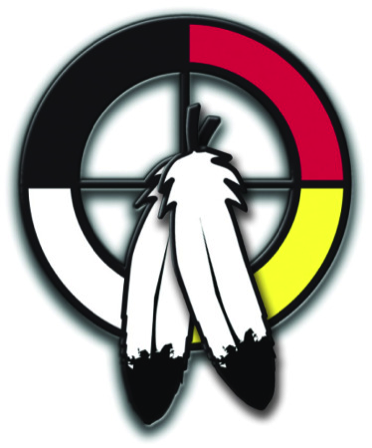Pathways to Healing
“Wellness is the belief in one’s connection to language, land, beings of creation and ancestry, supported by a caring family, community, service providers and environment.”
Culture and The Pathway to Healing
For many Indigenous people the physical, spiritual, mental, cultural, emotional and social well-being are important to healing and achieving balance within oneself.
Elders, the traditional holders of knowledge, and other kinship networks are the cornerstone of the contemporary Mi’kmaq community. Family is critical to providing both cultural and personal support.
Talking to an Elder, family member, friend, traditional healer, health or mental health professional can help a person who has survived sexual violence.
When supporting an Indigenous person who has been subjected to sexual violence it is important to consider traditional cultural and spiritual practices and supports.
The Medicine Wheel
The medicine wheel represents the Four Directions, each of which are assigned a colour: white, yellow, red, or black. The medicine wheel also encompasses the four aspects of human personality, the four seasons and the four stages of life. The centre of the wheel represents the sacred mystery. The medicine wheel forms the basis for many teachings.
Elders
An Elder is someone chosen by a First Nations community to be “the keeper and teacher of its oral tradition and knowledge”. (Mi’kmaq Confederacy of PEI) Elders can also provide teachings, cultural supports, and healing to victims/survivors of sexual violence as well as support people.

The seven sacred teachings
Click here for details on the seven sacred teachings.
Smudge ceremonies
Smudging is a cleansing ceremony that involves burning sacred medicine such as sage and sweetgrass.
Sweat lodges
A sweat is a ceremony that centres on spiritual cleansing. The lodge is designed to provide a safe, sacred place where the participants can concentrate on the spirits that are invited to the ceremony. Stones, known as the “grandfathers” are heated in the fire, placed at the centre of the dome-shaped lodge, and then doused with water, creating steam. Earth, air, fire and water are all present in the lodge.
Talking circles
A non-judgmental space that allows participants to share their thoughts and feelings and solve problems. There are talking circles for sharing, for healing, and for mediation.
Sacred pipe
The Sacred Pipe is used in prayer by an individual (and is not to be shared) or by a pipe carrier for a group of people.
Traditional Medicine bundles
A small pouch containing medicines and other objects that provide protection to the wearer. Generally worn around the neck and concealed.
Fasting
Going without food and water in order to cleanse, seek guidance, or as part of a ceremony, for example.
Mi’kmaw people of all ages are reclaiming their traditional spiritual and cultural practices, which were prohibited by colonial law, policy, and specifically residential schools. Many Mi’kmaw people are also reclaiming the Mi’kmaw language, which can be an empowering and healing experience.
Video Reflection Activity:
"My greatest wish is that there will be more writing from my people, and that our children will read it. I have said again and again that our history would be different if it had been expressed by us." -Rita Joe
Rita Joe, was a Mi'kmaw poet and songwriter, often referred to as the Poet Laureate of the Mi'kmaq people. Inspired by Rita Joe's poem, "I Lost My Talk," and her challenge for indigenous youth to "find their voices, share their stories, and celebrate their talents," Canada's National Arts Centre launched the Rita Joe National Song project. The project called on youth from five First Nations' communities in Canada to write, record, and create a music video for a song based on Joe's poem. This is the song and video from youth in Eskasoni.
Reflect:
What’s on the minds of young people you encounter or are supporting? How does this video connect to pathways of healing for youth? Add your thoughts to your notes using the button.
Visit Learn More for more info on Pathways to Healing.